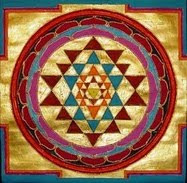Fatehpur Sikri :
Fatehpur Sikri , Agra Tour PackagesAnd so Fatehpur Sikri was only occupied for 14 years. They were rich, productive years but the water supply would not support the demands of the court. Or the death of the Sufi saint who brought him there in the first place, made Akbar lose interest. Or there were political reasons. (Take your pick.) Akbar left his court so abruptly that even today the feeling that this is a palace asleep rather than a palace abandoned still hangs around the almost immaculate ruins.
Ram Bagh :
The great Mughal emperor Babar laid out this earliest example of a Mughal garden. Laid out in 1528 by Babur the first of the Mughal emperors this is the earliest Mughal garden. It is said that Babur was temporarily buried here before being permanently interred at Kabul in Afaganisthan. The Ram Bagh is 2 to 3 km further north of the Chini Ka rauza on the riverside and is open from sunrise to sunset.
Jama Masjid :
Jama Masjid, Agra Travel PackagesOpposite the fort and overlooking Agra Fort railway station, the Jami Masjid or "Friday Mosque" was built by Shah Jahan in 1648 and dedicated to his favourite daughter, Jahanara Begum. Standing on a high plinth approached by stairs, and with five arched entrances to the courtyard, the mosque is crowned by three large sandstone domes distinguished by their zigzag bands of marble. Along the wings of the main prayer wall, panels of beautifully inlaid sandstone similar to those decorating the main gateway of the Taj Mahal, add an appropriately feminine touch. Still in use today, the mosque is one of the city's main landmarks, and serves as a useful reference point when exploring the crowded bazaars that sprawl from its base. These are laid out in a street plan that's barely altered since Moghul days, and is best negotiated on foot. Opposite the northeast corner of the complex, look out for the pehta-wallahs, purveyors of Agra's most famous sweets, which are made from crystallized pumpkins (and devoured with relish by the wasps living in the eves of the mosque mihrab arches).
Jami Masjid is beautifully decorated with paintings, inlaid stones, carvings and glazed tiles. The building comprises of pillared Dalan, a beautiful 'Chhajja' and the 'Chhatri' on the roof. The main Iwan of the building is rather simple and contains a central arch with geometrical designs.
Sikandara :
12km the tomb of Akbar, begun by the emperor himself and completed by his son,Jehangir. This richly decorated structure is a quaint mixture of styles.
Aligarh
Aligarh's name may not have the historical resonance of Agra or Lucknow but this city in central Uttar Pradesh has its own sense of history and purpose. A student town dominated by the red brick Moorish-style buildings of the Aligarh Muslim University, the hub of Sir Syed Ahmad Khan's pioneering movement of spreading modern education among Indian Muslims. Aligarh is also an industrial centre known for its lock and hardware manufacturing industry. It is also famous for its patchwork embroidery (patti ka kaam) and gajak, a sweet made of jaggery and sesame seed, which are much sought after by locals and visitors. The nearby towns of Purdil Nagar and Khurja are noted for their glass beads and ceramics respectively. The city also lends its name to Aligarhi pyjamas, which differ from traditional pyjamas by being broad at the base. All of which makes Aligarh an interesting excursion from Agra, which is just 80 km away
Diwan-I-Khas Agra India | Sheesh Mahal and Khas Mahal Agra India | Panch Mahal Agra India | Octagonal Tower Agra India | Akbar Mausoleum Agra India |Sikandra Fort Agra India | Itmad-Ud-Daulah Tomb Agra India |Fatehpur Sikri Fatehpur Sikri India | Ram Bagh Agra India | Dayal Bagh Agra India | Jama Masjid Agra India | Jahangir Mahal Agra India |
skip to main |
skip to sidebar

Holiday Travel Tour India, a virtual travel guide that helps you tour various destinations in India
No comments:
Post a Comment